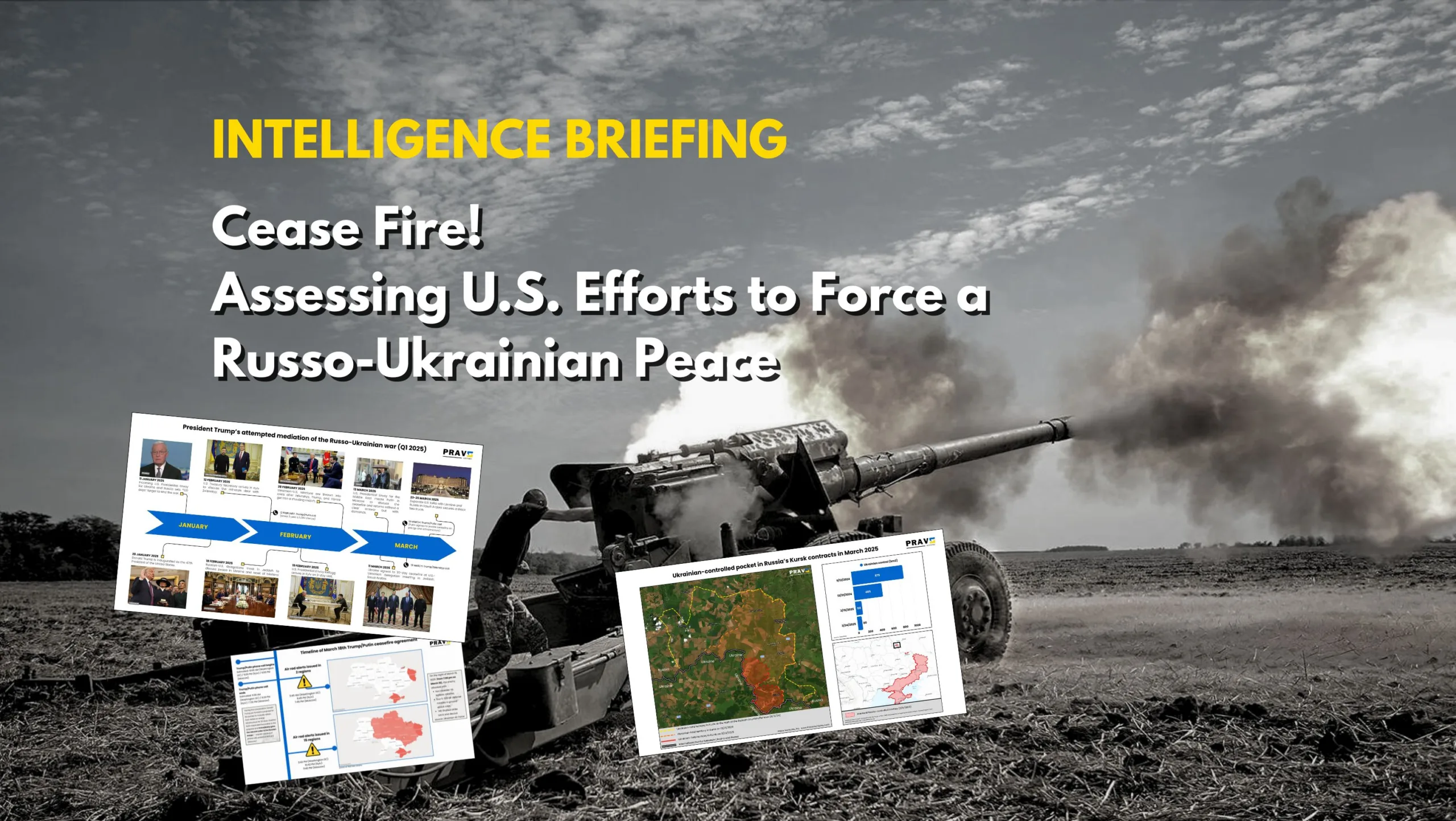Executive Summary
As of March 25, 2025, negotiations between Russia and Ukraine, mediated by the Trump administration, remain unlikely to produce a peace settlement within the first 100 days of President Donald Trump’s second term or by Easter Sunday (April 20th). A limited-time ceasefire across the entire battlefield may ultimately be agreed upon by Ukraine and Russia, but its implementation would be uncertain and likely unsuccessful. If peace efforts prove fruitless, the Trump administration is expected to persist in advancing the peace process, likely at Ukraine’s expense, risking further alienation of Kyiv.
The Trump administration’s carrot-and-stick approach to negotiations has been asymmetrically applied, alienating Ukraine and European allies while emboldening Russia. The temporary suspension of U.S. defense and intelligence support forced Kyiv to accept an unconditional 30-day ceasefire but severely strained U.S. relations with Ukraine and Europe. Meanwhile, emboldened by recent gains in Kursk, Russia has not reciprocated. Instead, Moscow proposed a limited ceasefire focused on energy and infrastructure targets—an offer that remains largely unimplemented despite formal commitments from President Vladimir Putin.
Russia’s response aligns with President Vladimir Putin’s established pattern of delaying major decisions while reshaping the narrative to serve Moscow’s interests under the guise of cooperation.
